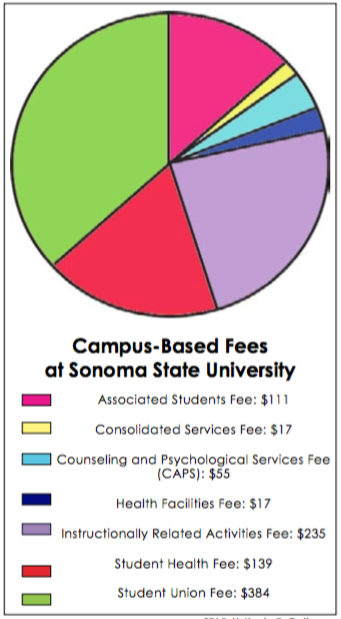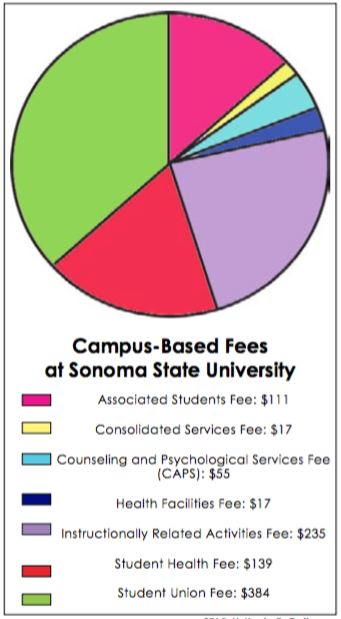STAR // Kayla E. Galloway
The tuition freeze in the California State University that has extended over the past four years is set to expire in the coming academic year. Students are protesting from campuses all over the state at campuses including Cal State Fullerton, Cal Poly San Luis Obispo, Chico State and San Francisco State.
According to the Sacramento Bee, in the first four years following the expiration of tuition freeze, tuition rose statewide by 79 percent. Though, according to the Chancellor’s Office, tuition increases are not anticipated.
“There are no plans to raise tuition,” saidCSU Chancellor’s Office Spokesperson Elizabeth Chapin. “Tuition fees have remained stable for four consecutive years, and the CSU does not intend to raise tuition fees this academic year or next.”
In addition to the tuition fees students pay each semester, students also pay campus-based fees, which vary at every university. At Sonoma State, students are expected to pay $958 per semester beginning in the fall, a number that has risen nearly 73 percent since 2011.
According to the CSU website, about half of the California State University’s budget comes from taxpayer dollars in the State of California and the other half comes from student tuition.
The CSU also receives a small portion of funding from California lottery ticket sales and works with a total operating budget of $5.1 billion. This budget covers all 23 campuses and roughly 474,000 students and 49,000 staff.
Chapin also said the higher education system has two sources of revenue: State funding and tuition fees.
The tuition freeze is directly related to how much state funding the CSU has received.
Under the Gov. Jerry Brown’s multi-year funding plan for the university system, the state committed to increasing funding for the CSU from 2013/14 through 2018/19. Based on the state’s direction, the Cal State system has been able to keep tuition flat.
According to numbers from the CSU, during the recession years, tuition increased when the state reduced its portion of the budget by $1 billion. California State University tuition has not increased since the 2011-12 academic year.
“The matter of tuition, is a system-wide issue,” said Associate Vice President of marketing Susan Kashack. “Tuition is not different on individual campuses.”
Tuition funds go to each specific campus andaccording to the CSU Budget Office, in the past ten years, what is described as “basic tuition” has about doubled at Sonoma State, climbing from $2,520 for a California resident’s undergraduate degree in the 2006/07 academic years and to $5,472 in 2015/16. That rise is in direct opposition to the tuition freeze from 2011/12 to the 2015/16 year.
This does not include the campus fees that cover everything from the Student Center to Health Services.
According to a Sustainable Budget Plan by the CSU, the two main sources of income for the university system have not kept up with inflation and the plan recommends that the system seek additional ongoing state funding and “generate new sources of revenue.”
However, the same document says the CSU has no plans to increase tuition in the 2016/17 academic year and is planning to ‘move past the practice of unplanned large tuition hikes to small, planned tuition fee increases in the future.




































